
Introduction
Estonia, a small but vibrant country in northern Europe, is one of those underrated destinations that truly has it all. With its medieval cities, vast forests, picturesque islands, and a coastline that stretches for miles, Estonia offers a perfect blend of nature, history, and modern charm. Tucked between Russia, Finland, and Latvia, this Baltic gem may not be the first place that comes to mind when you’re planning a European getaway, but trust me—it should be.
I first visited Estonia a few years ago, and it quickly became one of my favourite countries in Europe. From the fairy-tale streets of Tallinn to the tranquil beauty of Lahemaa National Park, Estonia feels both ancient and refreshingly modern at the same time. Whether you’re an adventurer looking to explore the wilderness or a history buff eager to dive into medieval legends, Estonia won’t disappoint. Here’s why you should start packing your bags.
Table of Contents
Reasons You Should Visit Estonia
1. Medieval Charm Meets Modern Cool
Estonia is a country where the past and the future blend effortlessly. In the capital, Tallinn, you can step back in time by wandering through the cobblestone streets of the Old Town, one of the best-preserved medieval centres in Europe. The Alexander Nevsky Cathedral and Toompea Castle dominate the skyline, offering a glimpse into Estonia’s rich history.
But Estonia isn’t just about medieval architecture. The country is also known for its innovative tech scene—Skype was invented here, after all. Tallinn’s modern neighbourhoods, like the Telliskivi Creative City, are filled with trendy cafes, street art, and digital startups. I loved spending time in these creative spaces, where Estonia’s modern, tech-savvy side shines through. It’s a perfect mix of the old and the new.
2. Nature Lovers’ Paradise
Estonia’s natural beauty is spectacular. With over 50% of the country covered in forests, and more than 2,000 islands, it’s a paradise for anyone who loves the great outdoors. Lahemaa National Park, just an hour from Tallinn, is the perfect place to experience Estonia’s wild landscapes. I hiked along coastal cliffs, wandered through pine forests, and even spotted some of the country’s famous bogs, which are surprisingly peaceful and beautiful.
The Baltic coastline is equally impressive. Estonia’s beaches are rugged and unspoiled, perfect for those who enjoy long, quiet walks by the sea. On the island of Saaremaa, I rented a bike and explored its windmills, lighthouses, and serene coastline. Estonia’s nature is all about tranquillity and simplicity, making it an ideal destination for anyone looking to escape the hustle and bustle.
3. Affordable and Off the Beaten Path
One of the best things about Estonia is that it remains relatively undiscovered compared to other European destinations. Despite its stunning landscapes and rich history, it doesn’t see the same influx of tourists as places like Prague or Paris, meaning you can enjoy the sights without fighting through crowds. Even in Tallinn, the busiest city, there are plenty of quiet corners to explore.
Estonia is also incredibly affordable. From accommodation to dining, you’ll find that prices are much lower than in Western Europe. I stayed in a lovely boutique hotel in Tallinn’s Old Town for a fraction of the price I’d pay in most European capitals. And whether you’re dining in a modern restaurant or a traditional Estonian tavern, you’ll find the food both delicious and budget-friendly.
4. Unique Culture and Traditions
Estonia’s culture is a fascinating blend of Baltic, Nordic, and Russian influences, but it has its own distinct identity. Estonians are incredibly proud of their traditions, and you’ll notice this in everything from their folk music to their handicrafts. If you visit in summer, try to catch the Estonian Song Festival in Tallinn, a massive choral event that showcases the country’s love for music and tradition.
During my visit, I had the chance to explore some of Estonia’s traditional saunas—an integral part of Estonian life. In Võru, I visited a local sauna, where I learned about the centuries-old practice of relaxing, sweating, and cooling off in icy lakes. It’s a deeply ingrained part of the culture and a fantastic way to connect with the local way of life.
5. A Gateway to the Baltics
Estonia is part of the Baltic States, along with Latvia and Lithuania, making it an excellent starting point for exploring the region. From Estonia, it’s easy to hop on a bus or a train to nearby cities like Riga or Vilnius. The country’s small size and efficient public transport system make it easy to explore both Estonia and its Baltic neighbours.
Plus, Estonia’s proximity to Finland makes a day trip to Helsinki as simple as hopping on a two-hour ferry. I spent a day in Helsinki and returned to Tallinn in time for dinner. Estonia’s location as a crossroads between the Nordics, Russia, and the Baltics makes it a fascinating and easy-to-navigate travel hub.
Best Places to Visit in Estonia
1. Tallinn

Tallinn is the jewel in Estonia’s crown, a city that balances its medieval history with modern innovation. The Old Town is a UNESCO World Heritage site, and walking through its narrow, cobbled streets feels like stepping into a fairy tale. I spent hours exploring the Town Hall Square, climbing Toompea Hill for panoramic views, and visiting the St. Catherine’s Passage, where local artisans sell traditional crafts.
But Tallinn isn’t just about history. Head to the Telliskivi Creative City, a former industrial area turned into a buzzing hub for artists, designers, and tech startups. I loved exploring the area’s street art and popping into its hip cafes and shops. If you’re looking for a taste of Estonia’s culinary scene, try Rataskaevu 16, a cosy restaurant in the Old Town where the food is as charming as the setting.
2. Tartu
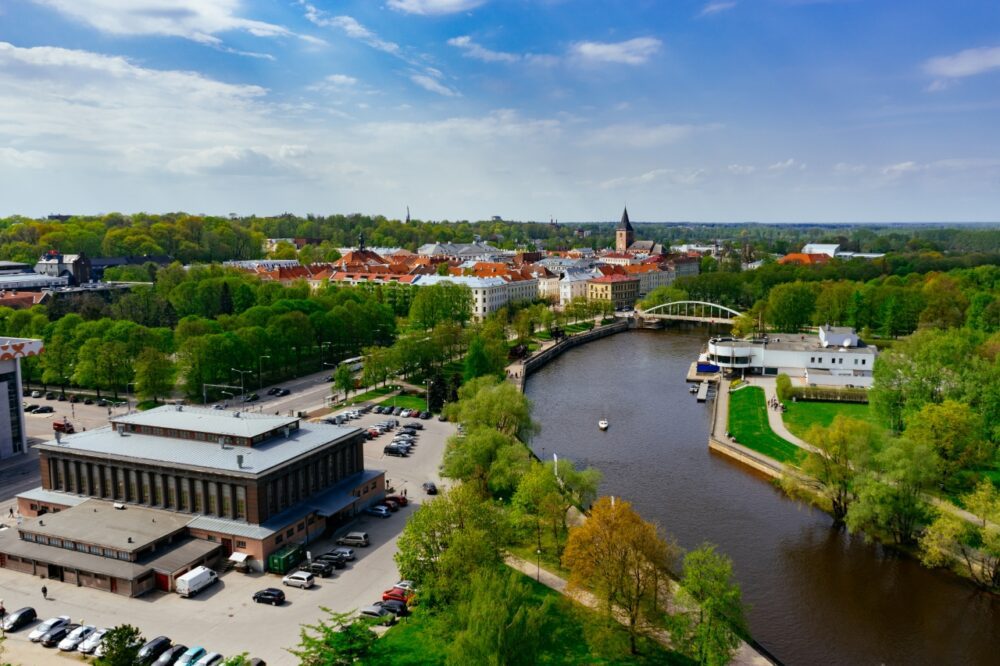
Known as the intellectual heart of Estonia, Tartu is a lively university town with a strong cultural vibe. Home to Estonia’s oldest university, Tartu has a youthful energy, with plenty of museums, cafes, and bars to explore. The city’s Town Hall Square is a great place to start, with its elegant Baroque buildings and famous Kissing Students Fountain.
Tartu is also home to some fascinating museums. I visited the Estonian National Museum, which offers a deep dive into the country’s history and culture, from ancient times to the present. If you’re looking for something more offbeat, check out the Upside Down House, a quirky attraction that’s exactly what it sounds like.
3. Parnu
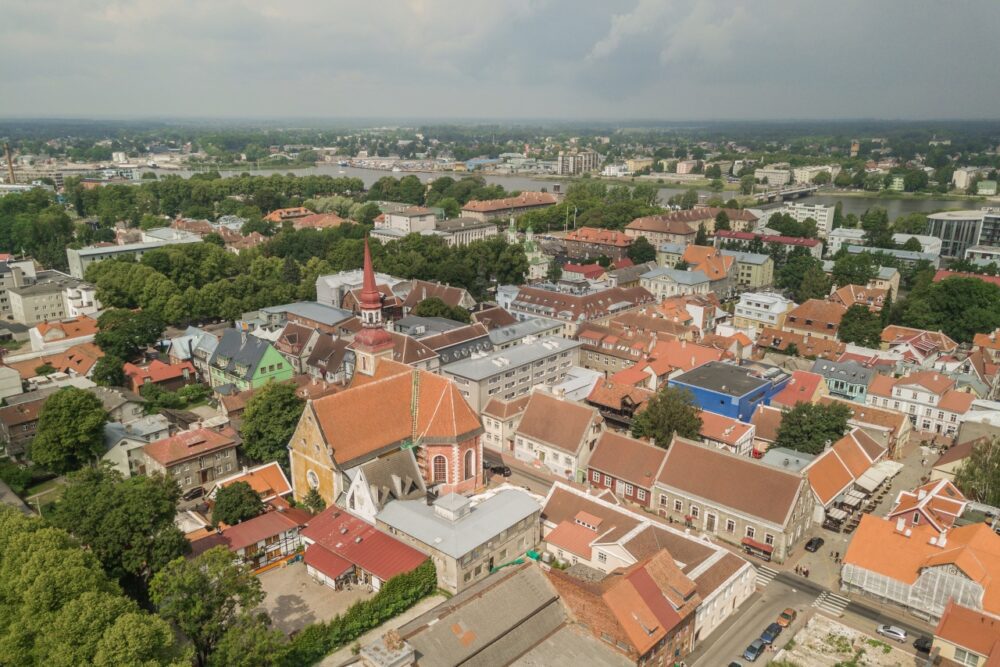
If you’re looking for a place to unwind, Parnu is Estonia’s favourite summer resort town. Located on the Baltic coast, Parnu is known for its sandy beaches and laid-back atmosphere. I spent a relaxing day lounging on the beach and strolling along the promenade, which is lined with cafes and ice cream shops.
Parnu is also home to several spas, making it the perfect place for a bit of pampering. I treated myself to a spa day at one of the town’s wellness centres, where I enjoyed a sauna session and a massage—an ideal way to recharge after exploring Estonia’s cities.
4. Narva
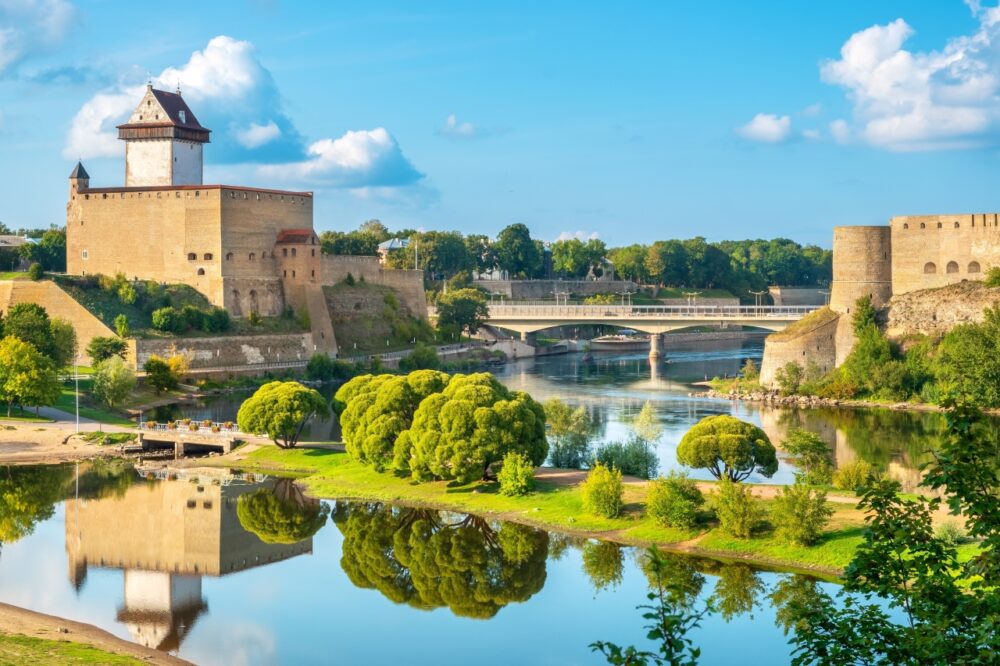
Situated on the border with Russia, Narva offers a fascinating glimpse into Estonia’s complex history and relationship with its eastern neighbour. The city’s most iconic landmark is Narva Castle, which overlooks the Narva River and offers stunning views across to the Russian city of Ivangorod. I walked along the riverside promenade, where the proximity to Russia is palpable—the two countries are separated only by the river.
Narva has a unique cultural vibe, shaped by its Russian-speaking majority. I recommend visiting the Narva Museum, which is housed in the castle and provides insights into the city’s strategic importance over the centuries. If you’re interested in Estonia’s borderlands and their history, Narva is a must-see.
5. Saaremaa Island

For a taste of Estonia’s island life, head to Saaremaa, the country’s largest island. Known for its quiet villages, windmills, and stunning coastline, Saaremaa is the perfect place to escape the mainland and enjoy some peace and tranquillity. I rented a bike and explored the island’s scenic roads, stopping to visit the iconic Angla Windmills and the dramatic cliffs at Panga.
One of the highlights of my trip was visiting the Kaali Meteorite Crater, a massive impact site that dates back thousands of years. Saaremaa’s natural beauty and slower pace of life make it an ideal destination for a weekend getaway.
6. Haapsalu
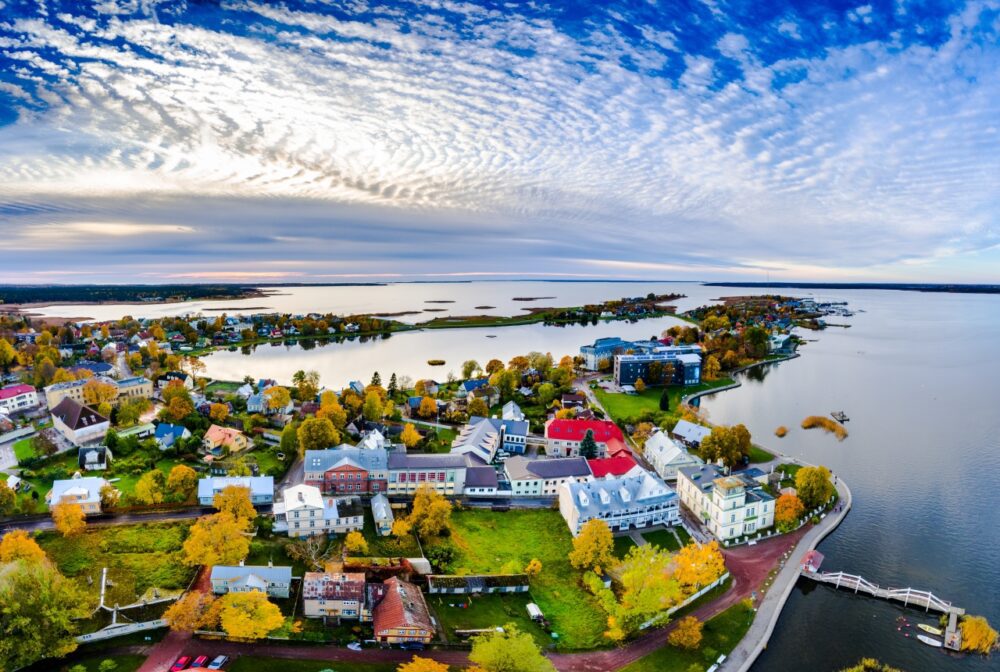
Haapsalu is a charming seaside town known for its wooden villas and spa culture. I spent a lovely afternoon wandering through the town’s picturesque streets, visiting the Haapsalu Castle, and enjoying the view of the sea from the town’s famous Promenade. Haapsalu is also known for its healing mud baths, and while I didn’t try one myself, the town’s reputation as a wellness destination is well-deserved.
Haapsalu is a quiet, off-the-beaten-path destination that’s perfect for a day trip or a weekend escape. It’s also known for its connection to Tchaikovsky, who visited the town in the 19th century and found inspiration in its serene surroundings.
7. Otepaa
If you’re looking for outdoor adventures, Otepää is Estonia’s winter capital, famous for its skiing and winter sports. I visited in the summer when the area transforms into a hiker’s paradise. The rolling hills and forests around Otepää are perfect for exploring on foot or by bike, and the views from Pühajärv Lake are absolutely stunning.
In the winter, Otepää comes alive with skiing, snowboarding, and other winter activities. It’s a great place for families or anyone looking to experience Estonia’s wilder side.
8. Voru
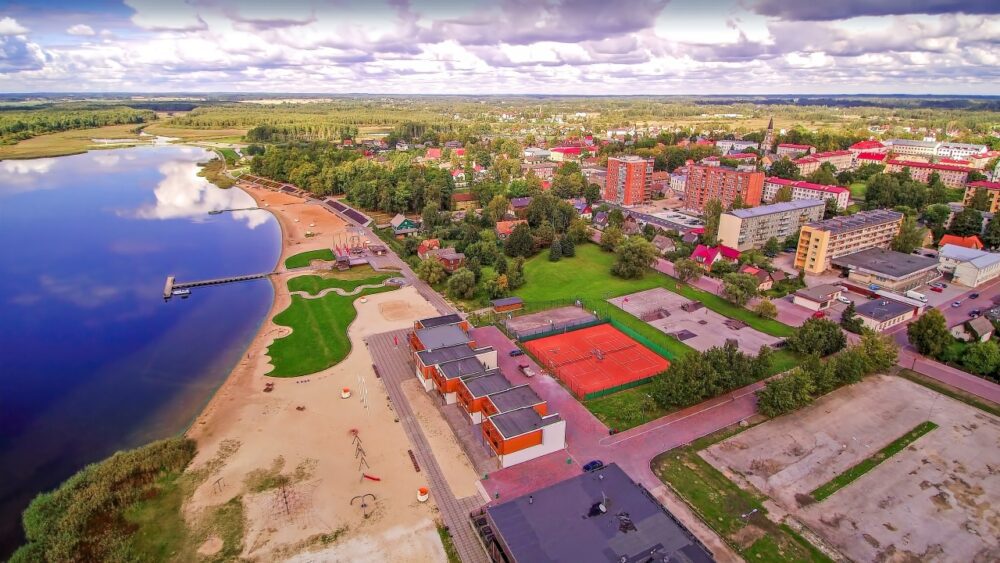
Võru, in the southeast of Estonia, is a small town with a big heart. It’s surrounded by beautiful lakes and forests, making it a great destination for outdoor enthusiasts. I spent a peaceful afternoon walking along the shores of Lake Tamula and exploring the town’s quaint wooden houses.
Võru is also the gateway to the Haanja Upland, home to Suur Munamägi, the highest peak in Estonia. The views from the top are worth the climb, and it’s a great way to experience the natural beauty of the region.
9. Lahemaa National Park
If you love nature, don’t miss Lahemaa National Park, one of Estonia’s most beautiful and diverse landscapes. Located on the northern coast, Lahemaa is a mix of forests, lakes, and coastal cliffs, and it’s a fantastic destination for hiking and wildlife spotting. I spent a day hiking through the park, exploring the picturesque Viru Bog and the historic manor houses dotted throughout the area.
The park is also home to several charming fishing villages, where you can learn about Estonia’s maritime history and enjoy fresh seafood. Whether you’re into hiking, birdwatching, or simply relaxing in nature, Lahemaa National Park is the perfect escape from city life.
Travel Tips for Estonia
Getting Around Estonia
Estonia’s public transport system is efficient and affordable, with buses being the most popular way to travel between cities like Tallinn, Tartu, and Parnu. Trains also connect some destinations, but buses tend to be faster and more frequent. In Tallinn, public transport is excellent, with trams, buses, and trolleys. For exploring rural areas like Lahemaa National Park, renting a car gives you more flexibility. Cycling is also a great option, especially on the country’s well-marked bike paths.
Best Time to Visit Estonia
The best time to visit Estonia is in the summer (June to August), when the weather is warm and daylight lasts long into the evening. This is perfect for enjoying Estonia’s nature, exploring its medieval towns, and spending time on the Baltic coast. Spring and autumn are quieter and still pleasant, with colourful landscapes and fewer tourists. Winter is cold and dark, but it’s a magical time to visit if you want to experience Christmas markets and snow-covered Tallinn.
Passport and Visa Requirements for Estonia
Estonia is part of the Schengen Area, so visitors from EU/EEA countries can enter with just an ID card. Travellers from US, UK, Canada, and Australia can stay visa-free for up to 90 days within the Schengen Zone. Make sure your passport is valid for at least three months beyond your stay. For trips to neighbouring countries like Latvia or Finland, border controls are minimal but bring your passport or ID card just in case.
Currency and Banks in Estonia
Estonia uses the Euro (EUR), and credit cards are widely accepted throughout the country, even in rural areas. ATMs are easy to find in cities and towns, but if you’re heading into more remote areas or small villages, it’s wise to carry some cash. Estonia is a highly digital country, so mobile payments are also common. Be aware that tips aren’t usually expected, but rounding up the bill at restaurants is appreciated.
Language and Useful Phrases to Know
The official language is Estonian, but English is widely spoken, especially in Tallinn and tourist areas. Learning a few basic Estonian phrases, however, is a great way to connect with locals. Try “Tere” (hello), “Aitäh” (thank you), and “Palun” (please). Russian is also spoken by many people, particularly among the older generation, but English will generally get you by in most parts of the country.
Budgeting and Costs for Estonia
Estonia is generally affordable compared to other European countries. Public transport is inexpensive, and you can find good-value accommodation, especially outside of peak summer season. In Tallinn, there are plenty of budget hotels, hostels, and Airbnbs. Eating out can be cheap, particularly at local eateries offering traditional Estonian food like karask (barley bread) and pirukad (savory pastries). If you’re planning to visit multiple museums or attractions, consider a Tallinn Card to save on entry fees.
Conclusion
Estonia is a country that punches well above its weight when it comes to offering a rich and diverse travel experience. From the medieval streets of Tallinn to the tranquil islands of Saaremaa, every corner of this Baltic gem is worth exploring. What makes Estonia truly special is its blend of old and new, with a fascinating history that sits comfortably alongside its cutting-edge tech scene and vibrant modern culture.
Whether you’re drawn to Estonia for its nature, history, or simply its laid-back vibe, you’ll find a country that’s as welcoming as it is beautiful. It’s a place where you can hike through pristine national parks one day, and dive into a buzzing café scene the next. If you’re looking for a destination that offers both adventure and relaxation, all without the tourist crowds, Estonia is the perfect place to discover. Trust me—you’ll leave wanting to return.
